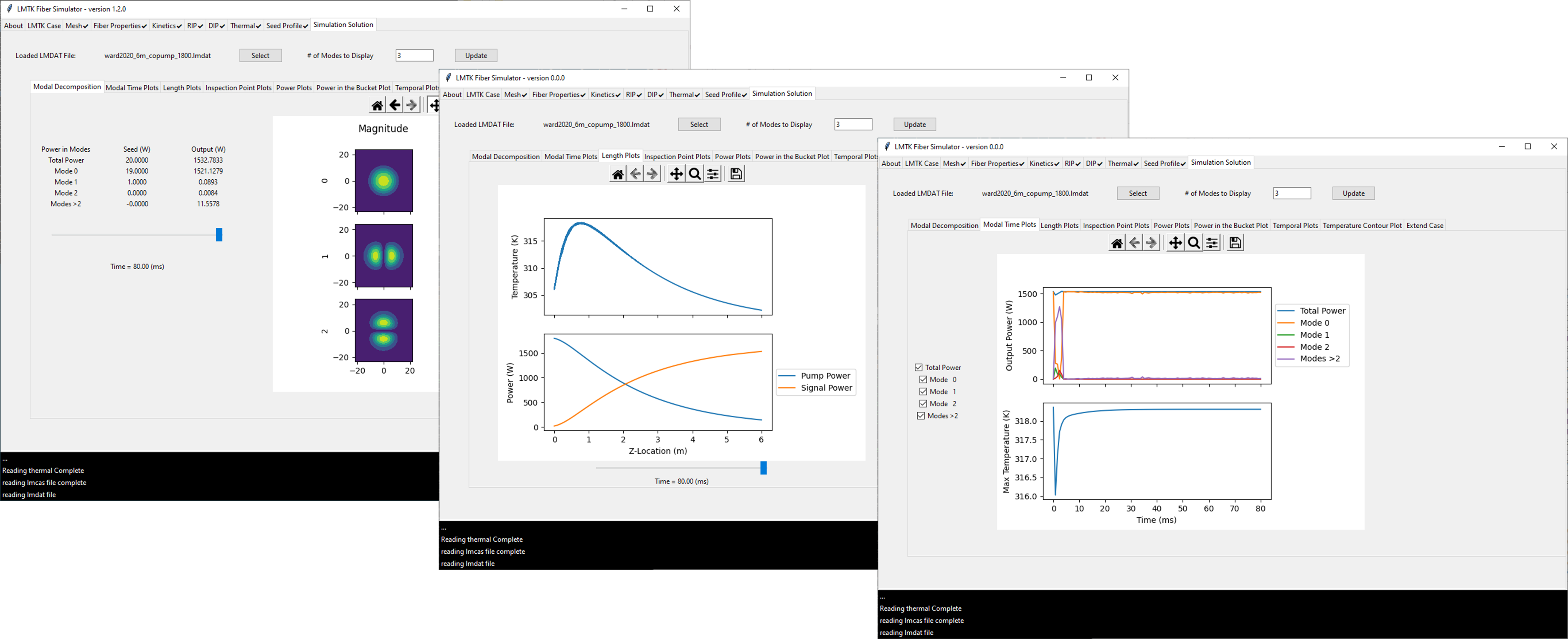Creare develops software for a range of platforms including applications deployed on web browsers, iOS and Android-based mobile devices, desktops and dedicated control hardware. Our areas of expertise include algorithm development, signal processing, cloud-based data manipulation, distributed systems and user-friendly interfaces.
Examples of recent projects include:
- Smartphone-based drug adherence monitoring system that obtains and confirms dosing time in near real-time during clinical trials.
- Object-oriented Python software package for computing soil moisture and soil strength predictions, and displaying the results via a Web portal.
- Development of 3-D rendering tools for viewing CT colonography data.
- Development of a verbal, self-administered, tablet-based neurocognitive screening that uses speech recognition and specially designed measures to optimize accuracy.
The use of mobile devices (smartphones, tablets, and other handhelds) is exploding for communications, entertainment, navigation, information collection and dissemination, and mobile health, to name just a few areas. Creare’s software team develops applications for iOS and Android that provide robust user-friendly interfaces for managing and interacting with data on cloud-based servers and for connecting and interacting directly with custom hardware.
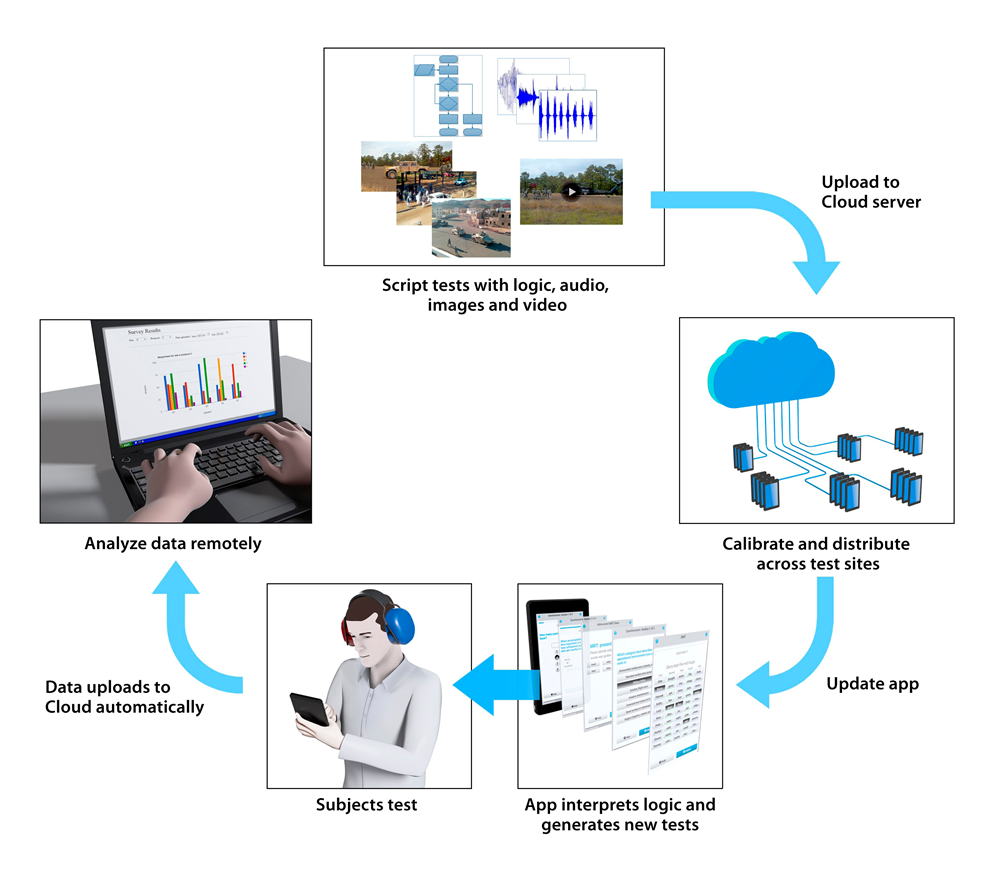
Leveraging mobile technologies for large scale and distributed human studies of hearing.
Examples of some recent projects include:
- Creare has developed its DASSP software to address the pressing need for forecasting of soil moisture and soil strength suitable for military-scale decision making, and enabling soldiers in the field to access critical mobility information in a timely manner on very bandwidth-limited mobile devices.
- Smartphone-based application for tinnitus symptom management and auditory training for deployed military personnel.
- Tablet-based application for deployed and distributed human studies that use the Cloud to store and access data in near-real time. A demonstration is available here: tabsint.org.
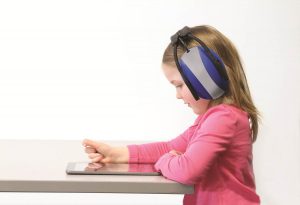
Creare’s audiometric testing system is driven by an easy-to-use tablet app.
Creare’s software team has developed user interfaces for applications that are intuitive and easy-to-use, while at the same time, able to gather inputs for complex computations and subsequently display rich output data in easy-to-understand formats. We have experience developing traditional PC-based software, as well as web-based and mobile device applications.
Examples of some recent projects include:
- Object-oriented Python software package for computing soil moisture and soil strength predictions, and displaying the results via a Web portal.
- Individual Protection System Performance Model (IP-SPM), a physics-based modeling and simulation software designed to quantify the protective and thermal performance of military chemical/biological protective clothing.
- Software system for administering hearing tests, processing the data and displaying the results.
- Smartphone-based application for monitoring and encouraging prescription drug adherence. The smartphone application is integrated with a mobile fluorometer to confirm adherence by testing for the presence or absence of a fluorescing biomarker in urine.
Creare specializes in applying robust, standards compliant firmware to its product development activities. We have the tools, expertise and laboratory facilities to design, analyze, implement, and debug firmware for a wide variety of products. Our completed products include very small coin-cell operated wireless sensor platforms, lithium rechargeable audio applications, FPGA-enabled video processing applications, and large cryocooler controllers ready for space deployment, among many others. We support processing platforms which include low power audio and sensor processors from Texas Instruments, as well as the ARM family of processors common to cell phones and IoT devices.
A sampling of recent efforts includes:
- A coin-cell powered compact low cost wireless fluorometer for medication adherence verification.
- An FPGA-based ‘star tracker’ for small satellite orientation determination.
- An audio processor for person-to-person communication using ultrasound.
- A high precision gyroscope interface to determine heading by measuring the rotation of the Earth.
Creare’s recent cloud-based geospatial software projects include:
WeatherCitizen (https://weathercitizen.org/):
WeatherCitizen is a mobile device app that enables users to record environmental data via text, audio, photo, and internal/external sensors. These observations are then crowd-sourced by sharing with other users, social media, and the scientific community via the cloud to improve situational awareness and enable scientific discovery.
PODPAC (https://podpac.org/):
POPPAC is free and open-source Python software for plug-and-play analysis of massive and disparate earth science data sets. It enables scientists to readily perform complex earth science analyses on serverless cloud computing environments without requiring a high degree of computing expertise, and then publish their results via web maps accessible from desktop and mobile devices.
GeoWATCH (https://mobility.crearecomputing.com/):
GeoWATCH applies physics-based models to enable tactical-scale prediction of soil moisture, soil strength and cross-country vehicle mobility from weather-scale forecast models. This enables soldiers in the field to assess critical weather-impacted mobility information in a timely manner on very bandwidth-limited mobile devices. In addition, forestry, agriculture, and outdoor recreation are examples of other activities that benefit from knowledge of high-resolution ground state conditions. Current weather-scale forecasts predict ground state conditions based on physics-based water and energy balance models, but these predictions are much too coarse (~25 km resolution) to meet the needs of terrestrial applications.
To vastly improve the state-of-the-art in ground state forecasting, Creare has developed a physics-based downscaling system called GeoWATCH that fuses weather-scale estimates of soil moisture and land surface water and energy fluxes, with terabytes of geospatial data including topography, land cover, soil classification, and vegetation information at high resolutions of 30-90 m.

Creare’s GeoWATCH generates high-resolution predictions of global ground state conditions, through fusion of terabytes of geospatial and weather data, to meet the needs of a variety of terrestrial applications.
GeoWATCH’s algorithms have been implemented in a high-performance, cloud-based computing architecture that provides access to data using an interactive mapping user interface (similar to Google Maps). It is accessible via a Web browser on any Internet-connected device. In addition, GeoWATCH cloud-based services are embedded within an OGC-compliant software framework that enables integration into external GIS-based client applications.
We have demonstrated integration of GeoWATCH with NASA’s NLDAS and GLDAS forecast models, as well as Air Force Weather’s LIS weather and land surface data products. An interactive demonstration version of GeoWATCH is available online athttps://mobility.crearecomputing.com/
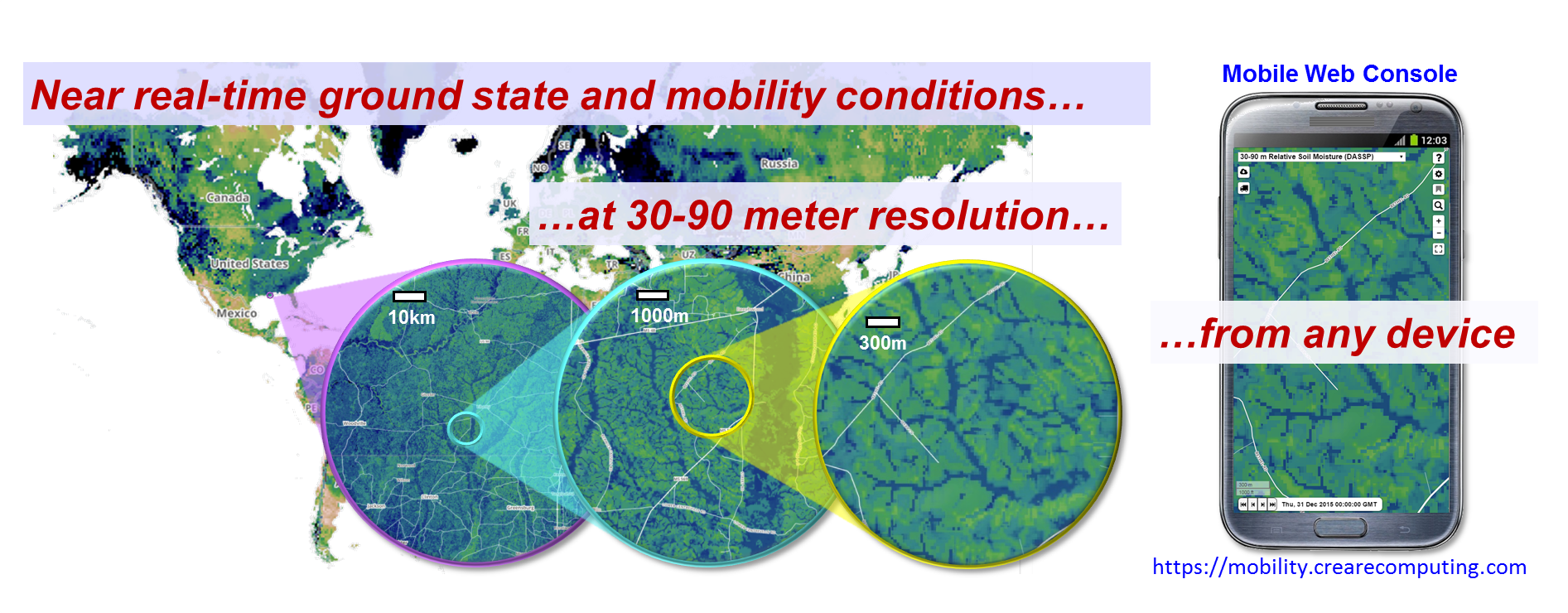
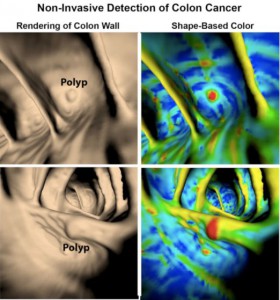
CT-based images of the colon wall processed to aid identification of polyps.
Creare has demonstrated expertise in advanced machine vision, automatic feature extraction, computational model generation, and state-of-the-art data acquisition and processing.
Examples of our work include:
- Development of 3-D rendering tools for viewing CT colonography data. We found that using a volume rendering mode, with variable coloring and opacity mappings based on underlying CT intensity and geometry, provides a more informative visualization of the colon when compared to isosurface renderings.
- Construction of a laser range scanner for use during minimally invasive surgery. We developed a laparoscopic system that permits surgeons to make precise, real-time measurements of the position of internal organs during surgery. Linking these measurements with pre-operative scans provides more confidence regarding location of surgical instruments during the operation.
- Demonstration of a prototype imaging system proving the feasibility of using surveillance video to detect jet blast deflector fouling by aircraft on a carrier deck. Aircraft position and orientation were determined with high accuracy by detecting the aircraft in the imagery data and translating the identified pixel locations to 3-D deck coordinates.
Fiber laser amplifiers are used for a wide range of applications, from industrial processes to defense activities. To develop new fiber designs or to understand the implications of fiber property variations on system performance, fiber designers and system integrators need to be able to predict the transverse mode stability, beam quality, and output signal of an as-drawn fiber. Creare has developed a software package that addresses this need. The software package, which includes a user-friendly GUI application and a standalone solver developed to run on HPCs, simulates the 3-D coupled wave optics, laser kinetics, and thermal behavior of a fiber amplifier.
